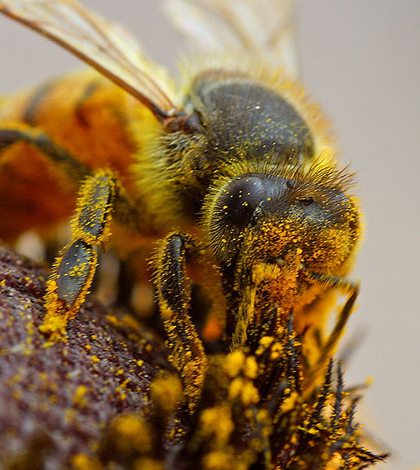Single-cell parasite may be responsible in part for global honeybee colony decline

A bee pollinating a flower (Credit: Jon Sullivan)
Declines in honeybee colonies across the world over the past decade have left many ecologists scratching their heads. While pesticides have taken much of the blame, new research from the University of California San Diego suggests that a single-celled parasite may be contributing to these insects’ global disappearance, according to a press release from the university.
A paper detailing the study shows that a parasite called Nosema ceranae can infect larvae of both Asiatic and European honeybee varieties, shortening their adult lifespan. Previous research suggested that the fungal pathogen could not infect bee larvae, based on low spore counts in adult bees.
The paper suggests that infected bees may not develop high spore counts until they are older, making early detection difficult. Nosema ceranae often diminishes if a beekeeper medicates a colony, but resurgences of the parasite are common, likely due to transmission between colonies or resilient infects in adults.
Top image: A bee pollinating a flower (Credit: Jon Sullivan)





0 comments